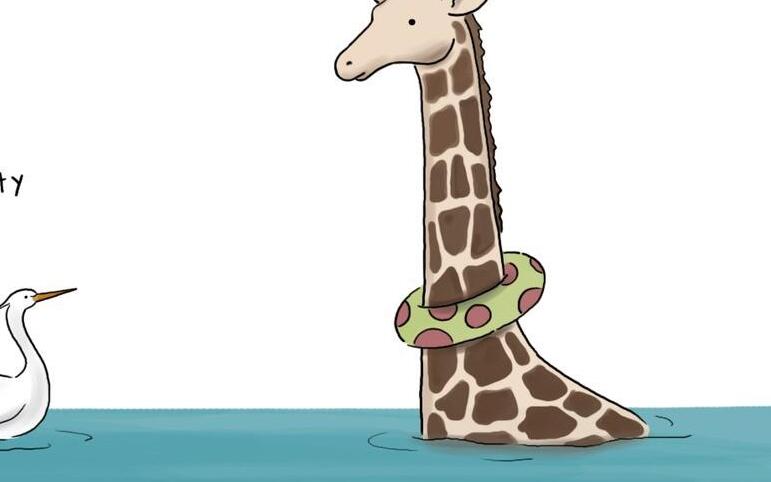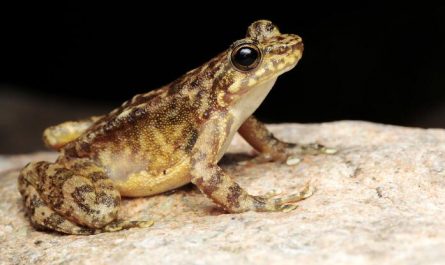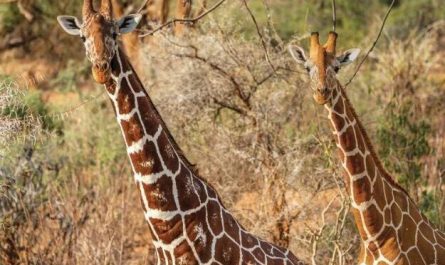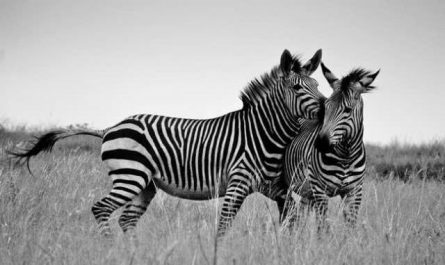What is the reason why the gazing deer can swim?
People have never seen giraffes swimming across the water, so whether giraffes can swim has always been an unsolved mystery.
After participating in an online topic discussion, Dr. Nash from the University of Portsmouth in the United Kingdom decided to work with Dr. Henderson from the Tyrrell Museum of Paleontology in Canada to study whether giraffes can swim.
Although most large animals are good swimmers, people always feel that giraffes are not good at swimming. According to Nasch, many previous studies have stated that giraffes can’t swim, and they are afraid of water and will stay far away. But the two doctors hope to use numbers and formulas to test whether this conclusion is correct.
At the beginning of the research, Dr. Henderson used data to simulate a giraffe, including its weight, mass, body size, shape, vital capacity and center of gravity. Then, through a series of complex calculations such as rotation dynamics and flotation dynamics, the research results are finally obtained.
They confirmed that an adult giraffe can become very light in 2.8 meters of water. They can also trek through shallower pools. But they are really not good at advancing in the water, the process should be difficult.
Although this research is not practical, the two doctors said that their main point is that they can simulate animals with data instead of using real animals to verify or solve some problems.
Morphological characteristics of giraffe
Giraffe males are 4.5-6.1 meters tall, females are 4.1-5.5 meters tall; males weigh 900-2000 kilograms, females weigh 700-1300 kilograms; average neck length is 2.4 meters; birth height is 1.8 meters; birth weight is 44-70 kg . Both males and females have a pair of small short horns covering the skin and hair on the tops of their heads. The background color is light brown and will not take off for life. In addition, there are two diagonal corners behind the ears and behind the eyes, but they are not very obvious. Some male giraffes have a horn in the center of their forehead. Therefore, they have 6-7 horns. The eyes are large and prominent, located on the top of the head, suitable for looking far away. In addition to a pair of big eyes that are a natural “lookout” for monitoring the enemy, they will keep turning their ears to look for the source of the sound, and then continue to eat until it is determined that there is nothing wrong. The giraffe’s head has a hard horn-like skull. The giraffe’s body coat is sparse, and the coat is covered with light yellow background and is covered with dark brown variegated patterns of different shapes and sizes. The variegated pattern on the skin is a natural protective color
The long neck of a giraffe is the same as that of other mammals. It has only 7 vertebrae, but their vertebrae are longer and are connected by strong muscles. The torso is short and slopes downward from shoulder to hip. The nape has bristles. The tail is long with a bunch of long hairs at the end. The front legs are longer than the back legs. The diameter of the hoof is as large as the dinner plate, the heart is 65 cm wide, and the lungs have a capacity of 50 liters. The height of giraffes requires them to have higher blood pressure than ordinary animals, because only in this way can the heart pump blood to the “very far” brain. The blood pressure of a giraffe is about three times that of an adult. Because giraffes have a high neck, when they lower their heads, the valves behind the ears regulate blood pressure and prevent excessive blood pressure. The giraffe’s tongue is 40 cm long and is blue-black. The lips are thin and flexible. They can easily avoid the dense stubble on the periphery of the plant. The rolling food is hidden in the leaves of the inner layer. The tongue is sticky saliva, tongue and lips. There is also a layer of tough keratinous protuberance that can prevent being injured by acacia thorns.
The long neck and long legs of the giraffe are also a good cooling tower. They live in hot tropical grasslands. Because of its large surface area, it is good for heat dissipation and can adapt to the surrounding environment well. The lung capacity is also large, which is conducive to breathing fresh air and exhausting exhaust gas. Due to the long legs, it is very inconvenient for giraffes to drink. They have to spread their front legs or kneel on the ground to drink water, and they are very vulnerable to attack by other animals when drinking water, so giraffes that live in groups often do not drink water together.






